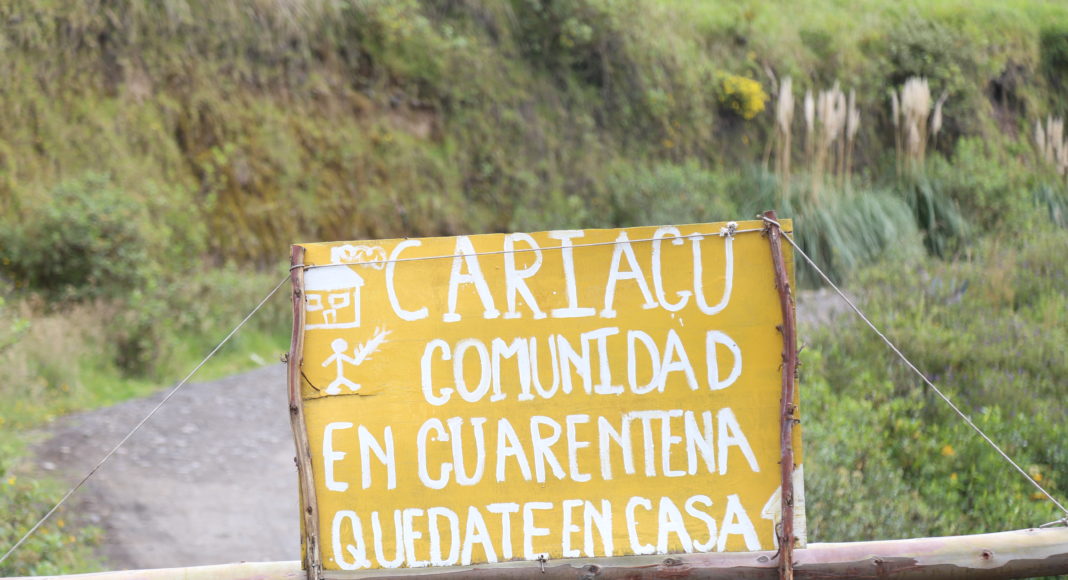In recent weeks, Ecuador has accelerated its plan to reopen the economy by loosening guidelines on provincial travel and other social activities.
‘We are going to reopen the beaches’ was one of the first signals indicating the easing of social guidelines by María Paula Romo, Ecuador’s Interior Minister and head of the National Committee for Emergency Operations (COE).
Ecuador’s president followed suit a few days later while attending the reopening of the Cotopaxi Volcano National Park on 30 June. President Lenín Moreno appealed to Ecuadorians by saying ‘to fulfill the sacred mission of helping tourism, come, visit these beautiful places.’
However, the decisions come at a time when Covid-19 cases continue to rise in urban areas due to earlier changes of the country’s economic reopening plan first implemented back on 5 May.
In late April, the president and COE national introduced a 3-stage traffic-light plan using red, yellow, and green to indicate a county’s progress towards complete economic normality. When Ecuador entered the new phase on 5 May, all 221 local counties decided to start at red. Gradually, the majority have moved on to yellow, and a handful to green.
The lifting of many travel restrictions by the national government comes ahead of a time of celebration in Ecuador during the months of July and August. Typically, people would be traveling to the regional festivities in the northern highlands of the country to celebrate Indigenous culture – Inti Raymi. A month later, the 10 de Agosto holiday brings people from the big cities to frolic on the beaches of Ecuador’s Pacific coast.
Cautious Cayambe
This year, however, local officials have suspended such gatherings due to the novel coronavirus. ‘I have said that we carry the festivities in our hearts, we carry the culture inside our hearts, but this year we’re not going to dance, we’re not going to party, to avoid infections [and] more deaths,” said the mayor of Cayambe, Guillermo Churuchumbi, in an interview for this story.
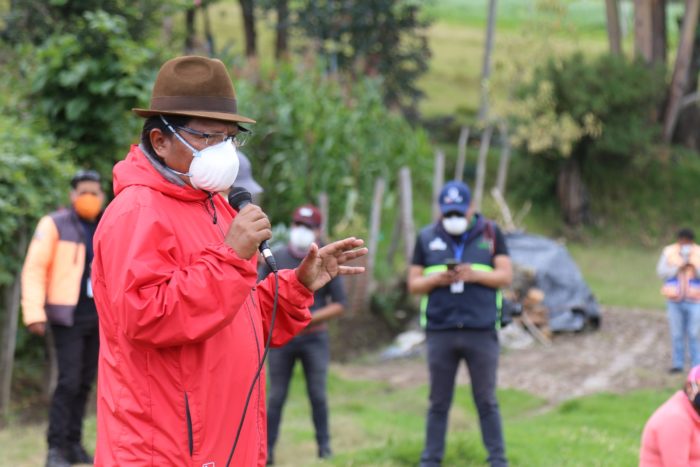
Cayambe is a small city situated northeast of Ecuador’s capital, Quito. It has a small urban population, but its rural surroundings are home to numerous indigenous communities often using the city as a hub for travel to purchase essentials.
For months, the mayor and county leaders in Cayambe have taken the necessary prevention measures to stop the spread of the disease by implementing over 130 vehicle control checkpoints, workshops on hand-washing and face-mask use in Spanish and Kichwa, water treatment, and neighborhood case surveillance plans to monitor positive cases. ‘They implemented a lot of public health interventions very early, which was good,’ according to Ximena Garzón, a professor at Universidad de Las Américas (UDLA) who provided guidance on preparations for the mayor and his staff.
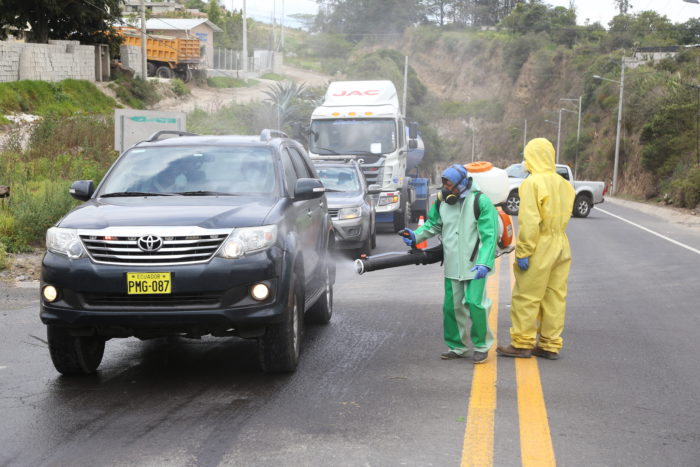
Fears are mounting that the early success at containing and preventing the spread of the virus in places like Cayambe may diminish as Quito and other provincial capitals around the country have become hotspots. ‘We have asked elderly people and indigenous families not to come to [the city of] Cayambe and worse, to Quito,’ said the mayor.
Quito’s decision to move to the yellow phase came before Cayambe’s, on 3 June. Since then, for several weeks, people are saying that the public health system has collapsed. Cases have quadrupled since early May. The day before entering the first phase of the plan on 4 May, Quito had only registered 1,619 cases. Now, as of 10 July, the number stands at 8,953.
What they have decided to say [is that] everything is under control, the number of cases are flattening and everything is good. And that’s not true
Professor Ximena Garzón
In the case of Cayambe as of July 10, the city has reported only 99 cases since April. There has been a slight increase in cases since 10 June after the county decided to enter the yellow stage of the country’s three stage re-opening plan. When the decision was made, there had only been 27 cases.
Such relaxation of controls on movement could impact smaller cities and rural Indigenous communities, bringing the virus from Ecuador’s large urban centers to the most vulnerable populations in the countryside. Any spread of the virus could jeopardise local health infrastructure, which would be unable to cope with a major outbreak, while it may not be feasible to transfer patients to larger cities for treatment.
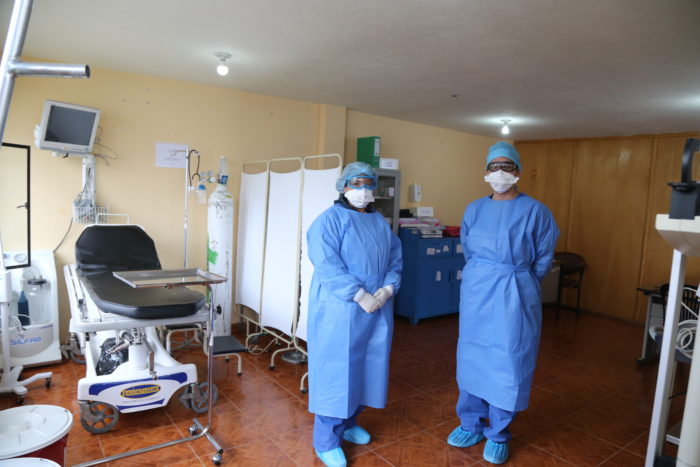
‘We have more than 24 beds now,’ said mayor Churuchumbi, describing the situation at the Raúl Maldonado public hospital in Cayambe. ‘At the beginning, we didn’t have anything, but now we have 24 beds set aside for the treatment of people with cases of mild complexity.’
More haste, less speed
The small jump in cases has raised concerns about the city’s health infrastructure. The mayor along with other county officials in the Pichincha province has requested that beds be made available in Quito for those from the surrounding area, as rural communities lack the means to treat severe cases of Coronavirus in their local hospitals and clinics.
Now that the capital’s health facilities are full and overwhelmed, it is very unlikely that Quito will take in patients from elsewhere, forcing these rural communities to maintain stricter prevention policies and reopen more gradually.
In an attempt to slow down the national government’s decision to allow social gatherings and travel to start up again, the prefecture and six mayors from the Pichincha province sent a petition to COE to modify the recently expanded curfew and implement a ban on sales and consumption of alcohol – the so-called ley seca (dry law).
The ‘ley seca’
In the petition, the mayors gave their reason for requesting the ban on alcohol as the recent rise in road traffic accidents, which only adds to the pressure on a collapsed health system, and the fact that this is a traditional time of celebration in the region.
Shortly after sending the petition on 29 June, Interior Minister María Paula Romo said, on a live feed on Facebook ‘so far we have seen no relationship between ley seca and stopping the spread of coronavirus.’ As of the date of this article, there has been no announcement of the mayors’ request being granted.
Despite Romo’s comments, in Ecuador alcohol and socialising go hand in hand. Ecuadorians enjoy get-togethers where people are close together, share drinks and dance together. ‘[People] are going to drink from the same glass, they are going to drink from the same bottle for sure. It’s going to have saliva on it and that’s going to have the virus,’ says Ximena, describing a typical scenario at an Ecuadorian party.
A 2014 World Health Organization study placed Ecuador in 9th place for the highest amount of alcohol consumption in the Americas. At the time, it found that on average, Ecuadorians drink 7.2 litres per year per capita, helping to sustain an industry that makes millions of dollars annually.
Speaking to a local media outlet in 2017, Esteban Braganza, a graduate in economics at UDLA, said ‘These statistics show a society immersed in the culture of alcohol, where consumption is legitimised in everyday life and is part of common practice for an Ecuadorian, crossing all socioeconomic classes.’
Blame the people
To make matters worse, the government has pointed the finger of blame at people who go out ‘irresponsibly’, despite its own campaign to progressively relax social distancing and encourage travel and gatherings. Health experts argue that the original plan lacks the preventative steps to keep people safe. Instead, it focuses on a complete normalization of the economy, rebounding as quickly as possible to pre-coronavirus levels, and with little input from expert epidemiologists. According to Ximena, ‘they have a lack of public health professionals and epidemiologists in their teams to give them advice on how to prevent this disease.’
Social leaders, such as Leonidas Iza – President of the Cotopaxi Indigenous Farmer’s Movement, have lambasted the government’s strategy of blaming people who are hungry and cannot stay at home anymore.
The government is blaming citizens as if they were the only ones responsible. Part of the irresponsibility is in the actions of the national government as well
Leonidas Iza
‘The stay-at-home program,’ continued Iza, interviewed via Zoom, ‘should have included a policy that supported people to stay at home. As a result, people have had to go out on the streets because they’ve actually had to confront hunger in their homes. What have citizens been doing? Well, they have to guarantee their families’ income, they go out to search for a job, to be able to ensure food for their children, for their family, on a daily basis. Most of them depend on their daily work to fulfill their needs, the government couldn’t guarantee policies for this.’
With the continued easing of social guidelines, Ecuador may be facing a new wave of cases set to pick up in early August, according to the Institute for Health Metrics and Evaluation at the University of Washington in the United States. Current projections show that Ecuador could have as many as 22,000 deaths by 1 November.
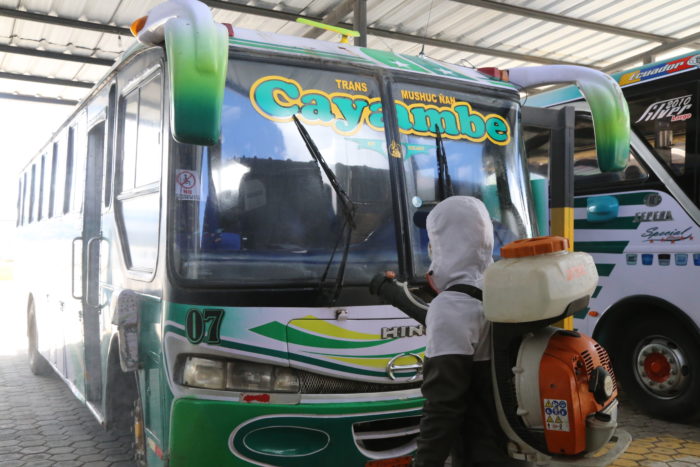
The decision to reopen Quito’s provincial bus terminals has been postponed several times since the beginning of the month.
For Cayambe, this will give the city extra time to prepare for the next major increase in movement. But it can also serve as an example to other parts of the country that with the correct precautions, reopening your community is possible with the proper preventative measures.
Stop press: on 13 July Ecuador’s Health Minister, Juan Carlos Zevallos, acknowledged that there are no Intensive Care Units available in Quito right now, but claimed that the situation is not serious. The Pichincha mayors have submitted another petition to ban the sale of alcohol and other local officials around the country are saying they’ll take matters in their own hands if COE national does not make changes as the virus surges.
Main image: A sign reading “Cariacu Community in Quarantine stay at home” at the entrance of their community. Image: Flickr Gadip Cayambe.
Vincent Ricci is a freelance journalist and photographer based out of and covering Ecuador. He looks at human and Indigenous rights and social movements, immigration, and politics. Follow him on Twitter @vincent__cr

